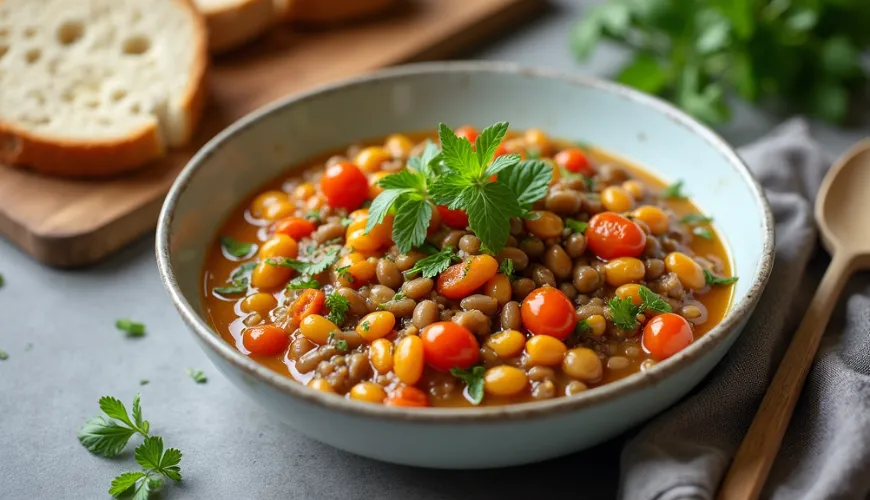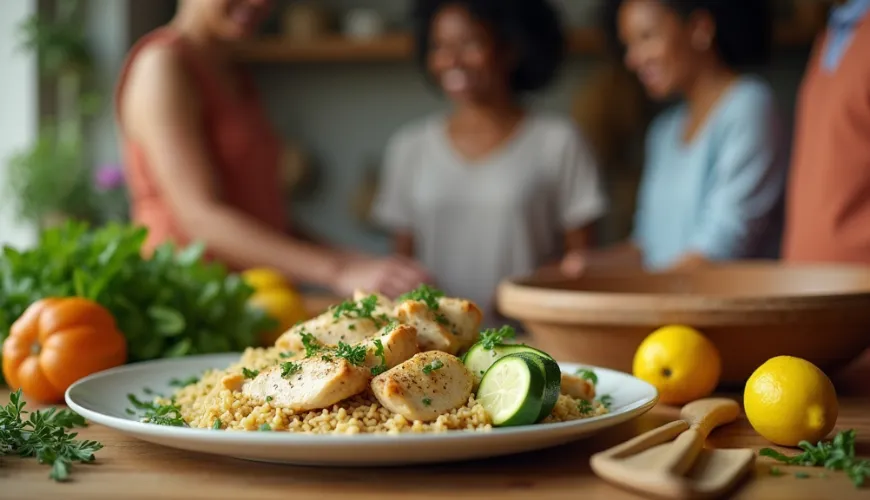
Eintopf Variations from Germany: How to Enrich Your Menu

Eintopf – German One-Pot Tradition Winning Hearts and Taste Buds
In the culinary world, few dishes capture the essence of "home comfort" as precisely as the traditional German eintopf. This thick soup or one-pot dish, as the name suggests (from the German "ein Topf" – one pot), is not only a gastronomic heritage but also a symbol of economical cooking that never compromises on taste. Whether it's the classic Bavarian-Saxon eintopf with sausage and cabbage or a more modern vegetarian version like lentil eintopf, one thing is certain – this dish undoubtedly deserves its place at the table.
When Tradition is Cooked in One Pot
The history of eintopf is closely linked with German rural cuisine. Since the 19th century, eintopf has been a practical way to utilize seasonal ingredients, save time and fuel, and still feed the whole family. In many households, eintopf was cooked on Sundays, and leftovers were warmed up on Mondays – often tasting even better as the flavors melded overnight.
But it's not just a rustic meal for the poorer classes. In Germany, eintopf holds a firm place in every federal state, with each region offering its unique variant. In the Rhineland, beans and sausages dominate, in Bavaria you can expect sauerkraut, while in the northern regions, fish or kale may be featured. This variability is precisely why eintopf is gaining popularity even beyond Germany's borders.
Lentil Eintopf - A Healthy Classic That Never Disappoints
Among the most popular versions is undoubtedly lentil eintopf. Not only is it nutritious, but the earthiness of lentils and root vegetables offers a rich flavor that warms and satisfies. It's no wonder it has become a staple not only in vegetarian kitchens.
Lentils hold a special place in German cuisine. On New Year's Day, lentil soup or eintopf is traditionally served because the round grains resemble coins and bring prosperity. Combined with carrots, celery, potatoes, and aromatic spices, it creates a dish that's hearty yet light. And for those who desire a more substantial version, a slice of smoked tofu or German sausage like bockwurst can be added.
In many households, lentil eintopf is also prepared as a "rescue dish" – when there's no time for lengthy cooking, but the craving for something warm and hearty remains. As such, it has become popular among students or working individuals seeking a simple yet nutritious lunch box solution.
What Makes a True German Eintopf So Special?
Although it might seem that eintopf is just a form of thick soup, its magic lies in the balance of flavors and textures that meld into perfect harmony during slow cooking. This is where the difference between a common "thrown together" stew and a true German eintopf, which respects tradition and composition, becomes apparent.
The foundation of any true eintopf is a quality broth – whether vegetable, beef, or poultry. It is followed by a mix of vegetables, often based on seasonal availability: carrots, parsnips, celery, cabbage, leeks. Grains like barley or legumes, especially lentils and beans, add structure and satiation. Spices are simple – bay leaf, allspice, pepper, salt – but thanks to slow cooking, the spice flavors are released and permeate the entire dish.
Some regional recipes, such as Bavarian eintopf, include sauerkraut, which adds a pleasant acidity and aids digestion. Elsewhere, a pinch of marjoram or a piece of smoked meat is added, enriching the dish with smoky tones.
Bavarian Eintopf – The Heart of Alpine Cuisine
When Bavaria is mentioned, many think of sausages, beer, and pretzels. But Bavarian cuisine also has its gentler side – precisely in the form of eintopfs. Bavarian eintopf is thicker, often based on pork broth, containing white beans, sauerkraut, potatoes, and hearty sausages. Occasionally, a type of dumpling called "Semmelknödel" is added, which beautifully breaks down in the hot broth and softens the overall flavor.
In mountainous regions, this eintopf is especially cooked in winter months when warming the body after a long day in the cold air is necessary. A typical example is a family estate around Garmisch-Partenkirchen, where skiing occurs all day and several generations gather around the table in the evening – with a large pot in the middle from which everyone serves themselves. Kids reach for carrots and potatoes, adults add sausage, grandma pours more broth and throws in fresh marjoram. This scenario repeats in various forms in thousands of households across Germany.
Why Have Even Modern Diet Advocates Fallen in Love with Eintopf?
In an era where more people care about a healthy lifestyle, sustainability, and local products, eintopf is experiencing a major comeback. No wonder – it is a dish that combines nutritional value with a low environmental impact, as it uses seasonal and often leftover ingredients.
Vegan and vegetarian versions of eintopf are now commonly available even in restaurants and bistros focusing on healthy food. Moreover, eintopf is a great way to involve children in cooking – they can choose vegetables, stir the pot, taste, and co-create a family recipe that will be passed on.
According to Zeit.de, eintopf is among the most popular homemade dishes in Germany, and its popularity is growing in neighboring countries. In the Czech Republic, it is gaining its place at the table precisely because of its practicality, availability of ingredients, and versatility. And what's more – prepared eintopf can be easily stored in the fridge for several days or frozen for later use.
How to Start with Eintopf at Home?
If you're tempted to try this piece of German tradition at home, start simply. For lentil eintopf, you will need:
- 1 cup of green or brown lentils
- 2 carrots
- 1 parsley root
- 1/2 celery root
- 1 onion
- 2 cloves of garlic
- 4 potatoes
- bay leaf, allspice, marjoram
- vegetable broth
- salt, pepper
- a tablespoon of apple cider vinegar at the end
Chop the vegetables into smaller pieces, sauté the onion with garlic, add lentils, spices, and broth. Cook until the lentils and vegetables soften, then finish with vinegar and optionally herbs. And if there's any left, it will taste even better the next day.
Perhaps that's the magic of eintopf – it's a dish that connects, warms, and tells a story. One pot, yet so many possibilities.

